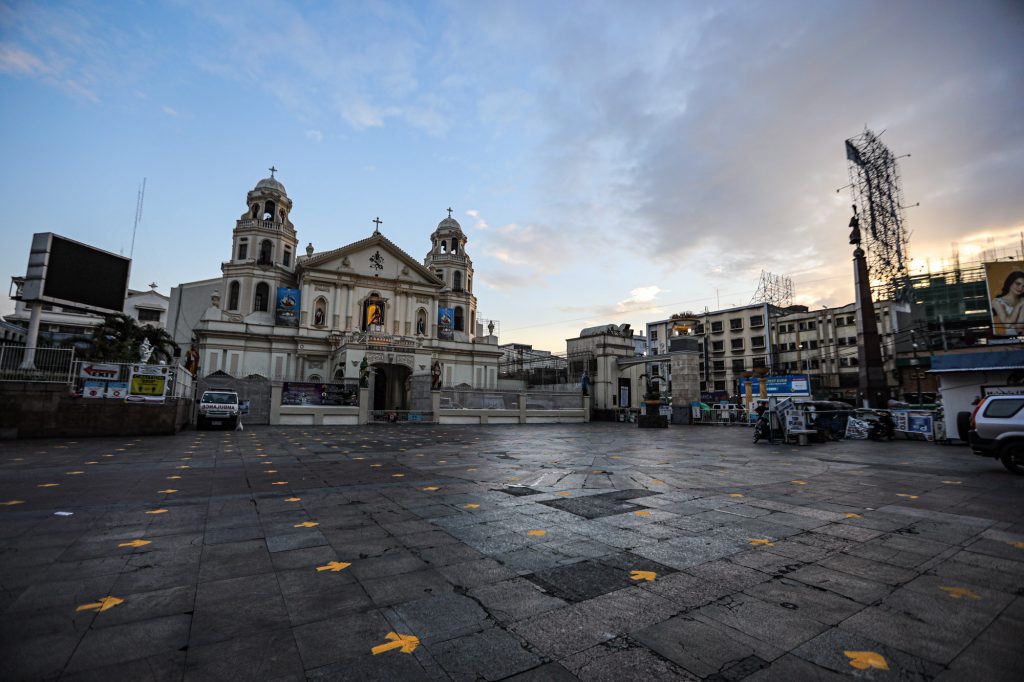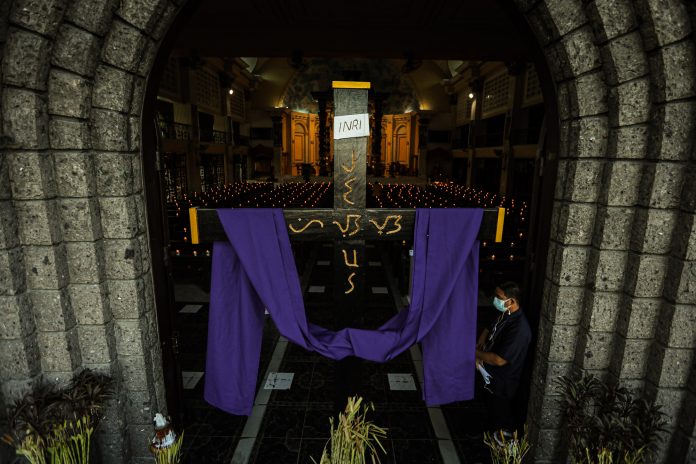Public religious gatherings will be prohibited starting Holy Monday, March 29, in Metro Manila after authorities placed the national capital under lockdown due to the rising number of COVID-19 cases.
The “enhanced community quarantine,” which bans mass gatherings including church services, will take effect throughout the Holy Week until April 4, Easter Sunday, .
“We will not allow all mass gatherings including church gatherings,” presidential spokesman Harry Roque said in a press briefing on Saturday, March 28.
Weddings, baptisms, and funeral services are allowed but only a maximum of ten immediate household members can attend.
The Catholic Bishops’ Conference of the Philippines, meanwhile, urged the faithful to pray “fervently and unceasingly” for an end to the pandemic.
Archbishop Romulo Valles of Davao, president of the bishops’ conference, described the situation as “really very alarming, to say the least.”
In a letter to his fellow bishops on March 28, Archbishop Valles urged everyone “to pray fervently and unceasingly for the Lord to intervene so that we will be spared from this rise of infection.”
“Let us enjoin everybody to intensify our prayers to the Lord, praying among others, the ‘Oratio Imperata’ and the Mass in time of Pandemic, if liturgically possible, so that this pandemic will end the soonest,” he said.
The prelate also urged everyone to pray for the people in the archdiocese and dioceses in the national capital region and nearby provinces that are experiencing the rising number of infections.
“Let us not forget those suffering most from this pandemic, especially the poor families and those who lost their daily income in order to put food on the table,” said Archbishop Valles.
“Together, let us put our efforts to bring mercy and compassion to them,” he added.
He reminded everyone to continue observing health protocols and “exert extra effort to make sure that public health standards and hygiene protocols are strictly followed in our church activities.”
“It is good for us to be always in close coordination with our local government and health authorities in this situation,” said the prelate.

The Department of Health reported 9,595 new coronavirus cases on Saturday, March 27, marking the second straight day the daily jump in infections remained above 9,000.
The Philippines now has 118,122 active COVID-19 cases, or patients who are currently sick, the most since the pandemic began.
The total confirmed caseload in the country is already at 712,442.
The number of new cases posted in March 2021 alone already surpassed the highest monthly infections tally set in August. The new COVID-19 cases in that period peaked at 127,465.
There are now at least 136,090 new cases recorded since March 1, 2021, with still four days to go in this month.
The Health department also reported 10 new deaths due to COVID-19, bringing the death toll to 13,159 while recoveries are up by 481, raising the total to 581,161.
The “Enhanced Community Quarantine” means that only those considered as “authorized persons outside of residence” or APORs can travel into and out of the quarantine areas.
Other restrictions include a curfew from 6 p.m. to 5 a.m. and no indoor dining in restaurants.
President Rodrigo Duterte placed the main island of Luzon under ECQ from mid-March to mid-May last year, ordering non-essential workers to stay at home to slow the spread of the virus.
The government began easing restrictions in Luzon on June 1, permitting more movement and the reopening of businesses.









